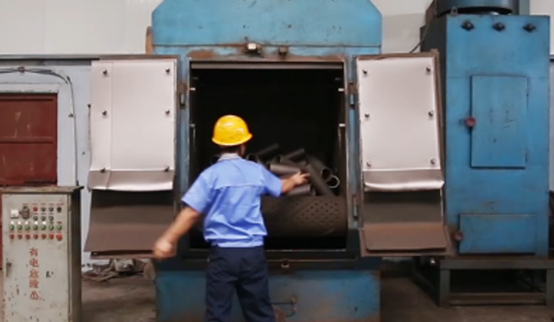 Afrikaans
Afrikaans  Albanian
Albanian  Amharic
Amharic  Arabic
Arabic  Armenian
Armenian  Azerbaijani
Azerbaijani  Basque
Basque  Belarusian
Belarusian  Bengali
Bengali  Bosnian
Bosnian  Bulgarian
Bulgarian  Catalan
Catalan  Cebuano
Cebuano  Corsican
Corsican  Croatian
Croatian  Czech
Czech  Danish
Danish  Dutch
Dutch  English
English  Esperanto
Esperanto  Estonian
Estonian  Finnish
Finnish  French
French  Frisian
Frisian  Galician
Galician  Georgian
Georgian  German
German  Greek
Greek  Gujarati
Gujarati  Haitian Creole
Haitian Creole  hausa
hausa  hawaiian
hawaiian  Hebrew
Hebrew  Hindi
Hindi  Miao
Miao  Hungarian
Hungarian  Icelandic
Icelandic  igbo
igbo  Indonesian
Indonesian  irish
irish  Italian
Italian  Japanese
Japanese  Javanese
Javanese  Kannada
Kannada  kazakh
kazakh  Khmer
Khmer  Rwandese
Rwandese  Korean
Korean  Kurdish
Kurdish  Kyrgyz
Kyrgyz  Lao
Lao  Latin
Latin  Latvian
Latvian  Lithuanian
Lithuanian  Luxembourgish
Luxembourgish  Macedonian
Macedonian  Malgashi
Malgashi  Malay
Malay  Malayalam
Malayalam  Maltese
Maltese  Maori
Maori  Marathi
Marathi  Mongolian
Mongolian  Myanmar
Myanmar  Nepali
Nepali  Norwegian
Norwegian  Norwegian
Norwegian  Occitan
Occitan  Pashto
Pashto  Persian
Persian  Polish
Polish  Portuguese
Portuguese  Punjabi
Punjabi  Romanian
Romanian  Russian
Russian  Samoan
Samoan  Scottish Gaelic
Scottish Gaelic  Serbian
Serbian  Sesotho
Sesotho  Shona
Shona  Sindhi
Sindhi  Sinhala
Sinhala  Slovak
Slovak  Slovenian
Slovenian  Somali
Somali  Spanish
Spanish  Sundanese
Sundanese  Swahili
Swahili  Swedish
Swedish  Tagalog
Tagalog  Tajik
Tajik  Tamil
Tamil  Tatar
Tatar  Telugu
Telugu  Thai
Thai  Turkish
Turkish  Turkmen
Turkmen  Ukrainian
Ukrainian  Urdu
Urdu  Uighur
Uighur  Uzbek
Uzbek  Vietnamese
Vietnamese  Welsh
Welsh  Bantu
Bantu  Yiddish
Yiddish  Yoruba
Yoruba  Zulu
Zulu High-Quality Conveyor Impact Bars for Enhanced Performance
The Importance of Conveyor Impact Bars in Material Handling Systems
In the world of material handling, conveyor systems are essential for transporting products and materials efficiently. However, with the movement of heavy loads, there comes the challenge of impact on the conveyor's structural components. This is where conveyor impact bars play a crucial role in ensuring the longevity and efficiency of these systems.
Understanding Conveyor Impact Bars
Conveyor impact bars are specially designed components that absorb and mitigate the shock and energy generated when materials are loaded onto a conveyor system. Typically placed at loading zones, impact bars are made from resilient materials that can withstand significant impacts without deforming or breaking. They act as a cushion, reducing the stress transferred to the conveyor belt and its supporting structure.
Functions of Impact Bars
1. Shock Absorption The primary function of impact bars is to absorb the shock of heavy loads. This capability helps in protecting the conveyor belt from excessive wear and tear, which can lead to costly downtimes and repairs.
2. Minimizing Material Damage When materials are dropped onto a conveyor system, they can get damaged due to the high-impact force. Impact bars help reduce this force, ensuring that products remain intact during transit.
3. Enhancing Conveyor Life By reducing the direct impact on the conveyor belt and structural components, impact bars extend the overall lifespan of the conveyor system. This longevity not only saves money on replacements but also minimizes interruptions in production.
conveyor impact bars

4. Improving Safety A conveyor system that incorporates impact bars is generally safer. By controlling the impact forces, the likelihood of accidents related to equipment failures is significantly reduced, creating a safer work environment.
Material and Design Considerations
Impact bars come in various materials, including rubber, polyurethane, and composite materials. The choice of material often depends on the specific requirements of the conveyor system, including the weight and type of materials being transported, the speed of the conveyor, and the environmental conditions.
The design of impact bars can also vary. Some are engineered with features that further enhance their shock-absorbing capabilities, such as grooves that allow for better energy dispersion. Others may have modular designs that make maintenance and replacement easier.
Installation and Maintenance
Proper installation of impact bars is crucial for optimal performance. They must be aligned correctly with the conveyor rollers and belts to ensure that they function effectively. Regular inspections are also essential to monitor wear and verify that they remain in good working condition. Maintenance schedules should include cleaning and replacing impact bars as needed to uphold the system's efficiency.
Conclusion
In conclusion, conveyor impact bars are a vital component in the smooth operation of material handling systems. They serve to protect both the conveyor infrastructure and the materials being transported, ultimately leading to increased productivity and safety. As industries continue to evolve and rely more heavily on conveyor systems, the importance of these impact bars cannot be overstated. Investing in high-quality impact bars is not just a cost-effective decision, but a strategic one, aimed at ensuring the long-term success of any material handling operation.
-
Revolutionizing Conveyor Reliability with Advanced Rubber Lagging PulleysNewsJul.22,2025
-
Powering Precision and Durability with Expert Manufacturers of Conveyor ComponentsNewsJul.22,2025
-
Optimizing Conveyor Systems with Advanced Conveyor AccessoriesNewsJul.22,2025
-
Maximize Conveyor Efficiency with Quality Conveyor Idler PulleysNewsJul.22,2025
-
Future-Proof Your Conveyor System with High-Performance Polyurethane RollerNewsJul.22,2025
-
Driving Efficiency Forward with Quality Idlers and RollersNewsJul.22,2025





























